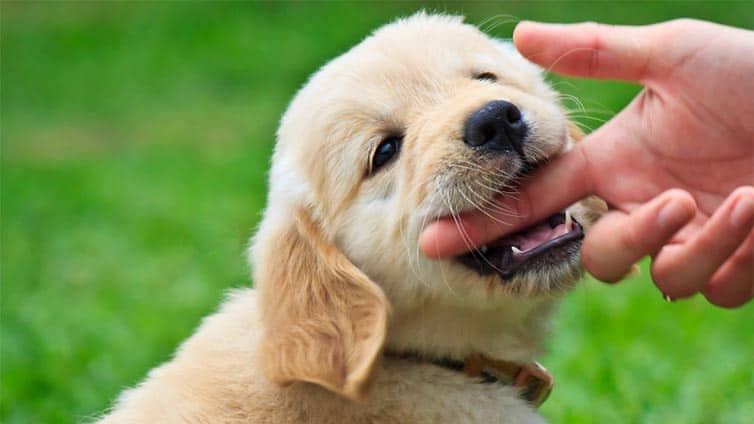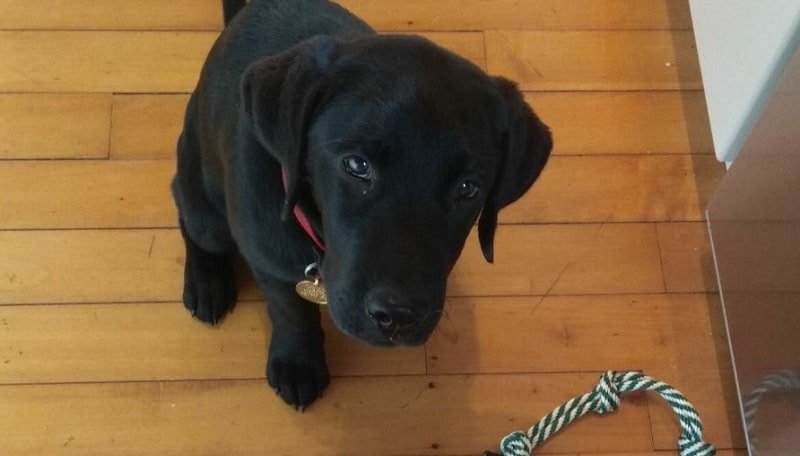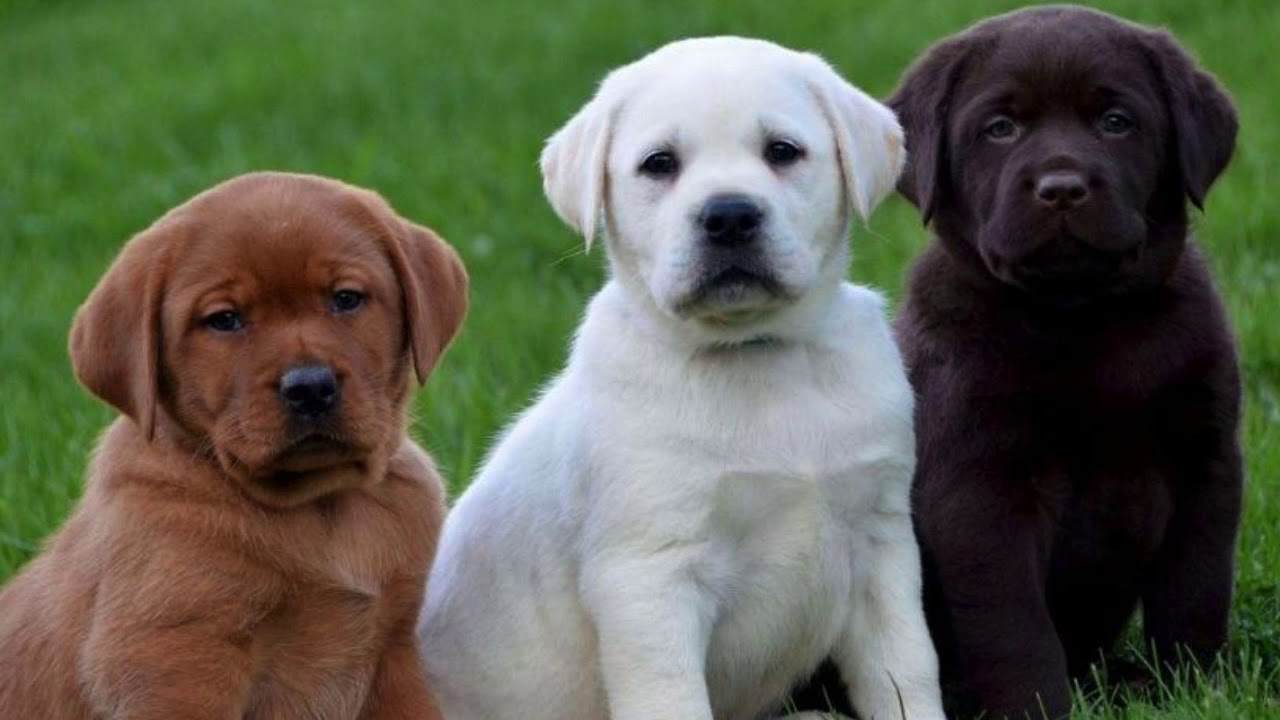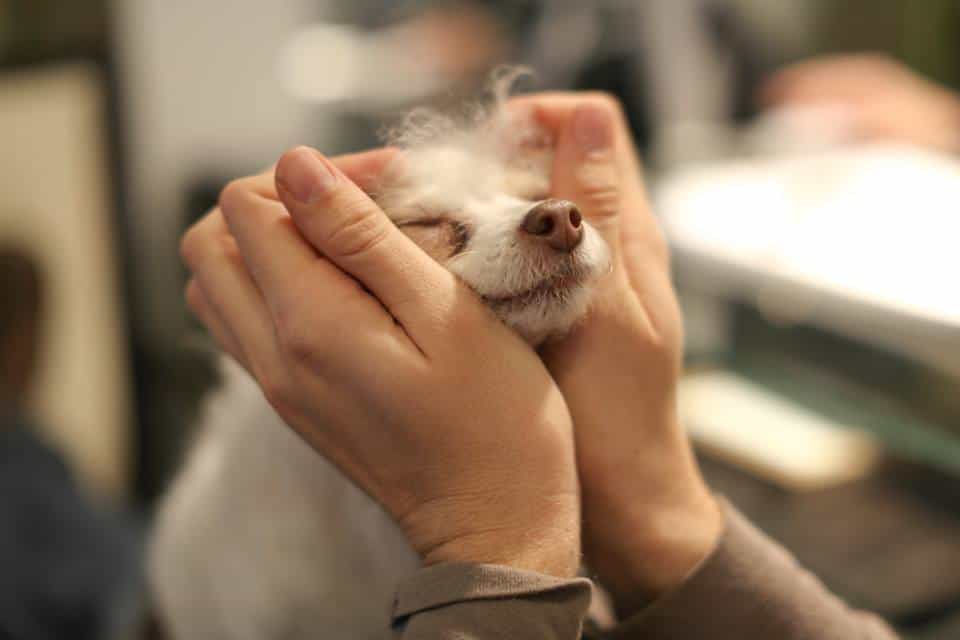All puppies have the habit of chewing and biting. That is their way of interacting with the world. Some people would block their puppies with products like a gentle leader. With the introduction and popularity of training dogs without using force, newer methods have become mainstream like Bite Inhibition in puppies.
Yes, Bite inhibition does work. With consistent effort, the puppies have shown reluctance in biting behavior. The idea is to stop him from biting to the extreme.
Bite inhibition works on the principle of discouraging the puppies to bite. When retriever puppies understand their limits on chewing and biting, they automatically start to show appropriate behavior with regard to biting.
Both Golden and Lab puppies exhibit similar behavior. Both of them are social in nature. That is why they are most popular in households as a family dog.
Still, it is required to train them for proper behavior. This training should aim to teach them proper behavior when indoors and outdoors. The very first thing that people get annoyed about puppies is them biting on all kinds of stuff.
Bite inhibition is not difficult to teach. With the guidelines outlined below, it will become very easy for you to train the puppies to refrain from biting behavior. You need to follow these steps every day and with patience.
Reasons for Retriever Puppies Biting Behavior
The golden retriever has a reputation for softness and warmth. Despite their relentlessly boisterous nature, these dogs are superb communicators, highly intelligent and totally suited to life with young children and other pets.
Golden retrievers are known for their gentle temperament so it can be a surprise when families run into the biting issue with puppies.
1. Biting Behavior Is Natural to Retriever Puppies
The first thing to know is, no, your new puppy is not broken. If you’ve recently adopted a retriever and he’s taken to nipping at hands or feet, don’t panic.
Assuming there are no stressors in his environment, he’s almost certainly doing what puppies like to do best – investigate. While even playful nipping can be unpleasant, it’s important to distinguish between overstimulation and aggression.
Retriever puppies have a strong impulse to gnaw on objects as a way to explore the world around them, just like a human baby. Sometimes, they get over-energetic and bite in a way that causes pain which is why this behavior can’t be encouraged.
It should be persistently redirected into other forms of play but try not to punish your puppy for testing their teeth and doing what’s natural.
2. Retriever Puppy Feels Danger or Oncoming Threat
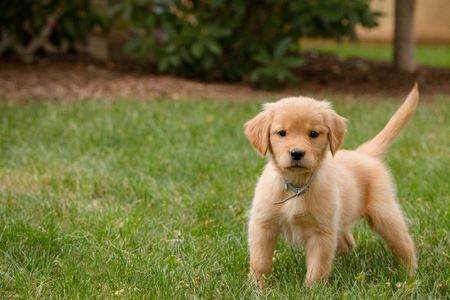
If it’s clear your puppy is not being playful when he bites, it’s doubly important to get to the root of the problem. Almost all dogs bite in response to feeling threatened.
Is there anything in your puppy’s environment that may be causing him stress? Look closely at his body language. Is he showing the full whites of his eyes? Is he sniffing or lip licking excessively? Does his posture change from relaxed to tight and tense just before he bites?
Handling an aggressive dog is difficult but combating this hostility with your own is the last thing you should do. Try to understand, a retriever puppy has few defenses. All he has is the ability to nip when he’s scared. Empathy and patience are key to solving this behavior. He needs to learn to trust you.
3. Biting When He Is in Pain
If your puppy is not showing signs of aggression or playfulness, but he’s still biting occasionally, the issue may be physical. He could be reacting to being touched in a painful area. Take a step back and just watch him. Check if he’s walking correctly, without limping or swaying. Is he licking one spot over and over again?
Use your eyes and knowledge of his routine to assess the likelihood that your dog has an injury. For most pets, a drop in appetite is a sure sign that something is wrong. Retriever puppies have big appetites.
If yours suddenly stops eating and bites when people try to touch him, consider a visit to the vet. It may be nothing but it’s best to check.
What Is Bite Inhibition or Soft Mouth?
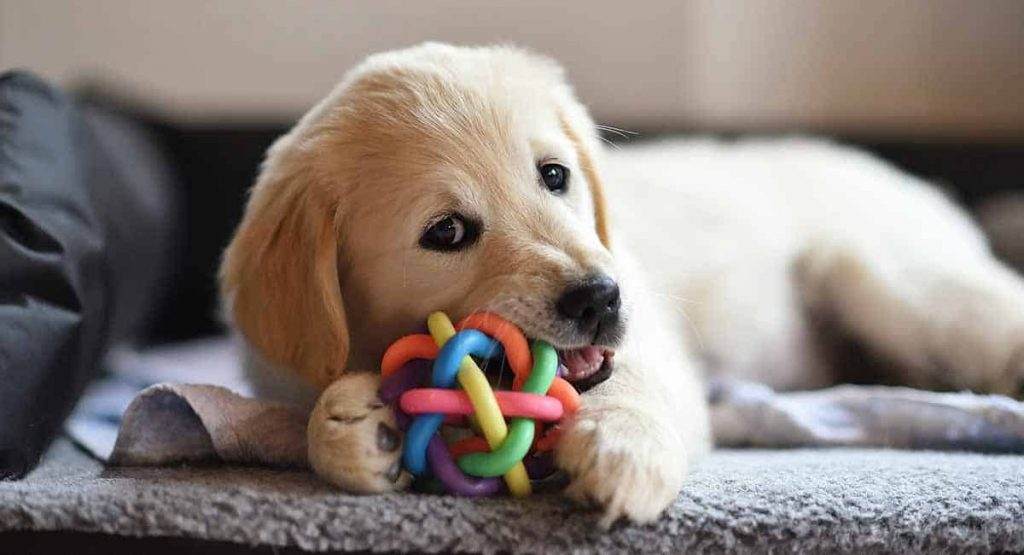
In many ways, bite inhibition is the most important part of any dog’s training. All dogs, of all species, are capable of biting to cause harm.
However, the vast majority don’t bite for this reason. Often, they’re scared, startled or overstimulated. You may be surprised to learn the severity of a dog’s bite has little to do with their level of aggression.
A big dog who’s angry and frightened may bite much more softly than a smaller dog who’s nipping out of over excitement. The difference is in the degree of pressure.
Dogs have the ability to bite with a ‘soft mouth’ instead of a hard one but most need to be taught this skill. When they learn it, bite injuries become significantly less likely.
We can’t banish all fear or aggression responses in dogs because they are necessary for survival. What we can do is eliminate triggers and teach our pets that, when they send a warning, it should be a restrained one.
They should always bite (if they feel it’s necessary) with a soft mouth and then back away from the situation.
Retriever Puppy Bite Inhibition Schedule
Birth to 8 Weeks – Leave It to Mom
If you’re lucky enough to be raising a retriever pup from birth, the first eight weeks are pretty simple. Their mother should be more than capable, as long as she’s healthy, of teaching her fair-haired offspring how to behave. Watch closely as she tempers their playful nipping and biting, teaching them how much force is acceptable.
8 to 12 Weeks – Patience and Repetition
It’s time to pick up where mom left off. One of the easiest ways to teach puppies that hard bites hurt is with sound. When your puppy nips and causes pain, let out a loud high pitched shriek. The aim is to stop him in his tracks and make it clear you’re unhappy.
Assuming a strong bond is already forming between you, this should give your puppy pause for thought. Shriek, then move away immediately.
Put an end to the playtime and go elsewhere, ideally out of the room. The last thing a puppy wants is to ruin playtime, so you’ll likely find him in an apologetic mood on your return.
For bite inhibition to work, there must be a distinction made between gentle, acceptable gnawing and painful biting. Don’t punish your retriever for using his mouth to explore unless he’s causing discomfort or behaving aggressively.
Soft mouth training is only effective if the puppy understands there’s a difference between soft and hard.
3 to 5 Months – Temper Jaw Pressure
As your puppy grows and matures, you can start to gradually phase out all of his biting behaviors. The same process is still effective but now, use the shriek response for softer bites and nips as well. Eventually, your retriever puppy should come to associate all biting (even with a soft mouth) with negative outcomes.
They bite, you get hurt. You feel disappointed in them. You move away and playtime comes to an end. In time, they’ll begin to recognize the cause and response correlation between these actions.
It won’t happen overnight and, if there are other family members in the house, they must also be onboard with bite inhibition training. Teach them your best shriek.
5 to 6 Months – Putting an End to Mouthing
The end goal is to get to a place where your retriever puppy doesn’t feel the need to bite in any way. He’s not afraid or nervous so he won’t bite out of fear. Plus, he’s learned to use healthier outlets for over excitement such as playing fetch or wrestling with his toys.
Stay patient and persistent. Continue to repeat the bite inhibition training. Eventually, all attempts to close their mouth around your skin should be met with the same shriek.
If soft mouth training is successful, it doesn’t mean your dog will never bite. It means they’ll only bite as a last resort when threatened and always with nonlethal force.
Why Does Bite Inhibition Have a Good Success Rate?
Bite inhibition is a highly effective technique because it doesn’t punish the dog for demonstrating natural behaviors. If all you do is yell at a puppy, not only will it fail to understand, it’ll come to associate you with aggression.
We don’t punish babies for accidentally breaking toys. It’s not fair to punish a puppy for learning how the world works.
It focuses on systematic, long term change rather than quick fixes. Yes, it can be tedious, and you may have to put up with some nipping at first, but the changes are permanent.
Think of Pavlov’s dogs. Linking a negative association – playtime is over – to the act of biting helps your puppy understand that biting disadvantages them. It makes life less enjoyable.
Can Bite Inhibition Completely Stop My Retriever’s Biting?

As explained, there’s no guaranteed way to prevent a retriever or any dog from ever biting again. There’s no way to know if they’re going to be in a threatening situation. So, how can you know they’ll never need to sound the alarm and protect themselves?
The purpose of bite inhibition is not to stamp out a dog’s innate abilities. It is a form of socialization. It teaches puppies there’s a time and place for biting and it isn’t until they feel under attack. Even then, their bite must be restrained and intended only to warn.
It may sound odd to teach a dog not to bite by ‘allowing’ limited types of biting. Yet, try to remember that teaching is more than telling. Whether working with a puppy, baby or teenager, the key to changing behaviors is understanding. It’s much more useful to know why we can’t do something than to simply be told it is forbidden.
Do’s and Don’ts
To ensure your bite inhibition training is successful, follow a few simple rules and guidelines:
Do’s
DO give your retriever puppy lots of toys and other items to gnaw on. Often, puppies bite because they’re bored. They need lots of stimulation and a variety of sturdy, chewy toys to sink their teeth into. If they’ve got a toy they adore, they’ll gnaw it before they gnaw on you.
DO quit roughhousing when your puppy gets over-excited. He’s only a baby and he’s still learning to control his emotions. If he gets too energetic, he may lose the ability to restrain himself. It’s up to you to send a message by putting a stop to painful, nippy playtimes.
DO remain consistent. It can be hard to stay firm when you know the little guy just wants to play. However, if you continue to play after responding negatively to a bite, you’ll send him mixed signals. The same goes for responding differently to nips and bites depending on how you feel at the time. Respond in the same way every time.
Don’ts
DON’T continue to shriek if it elicits the wrong response from your puppy. Occasionally, retrievers mistake their human’s attempt at soft mouth training for a sign they want to keep playing and mouth wrestling.
Some dogs are more mischievous than others. If your golden retriever does not stop when you shriek, try a different noise.
DON’T have an extreme reaction to being nipped or bitten. This will only pique the dog’s interest. The goal is to make your puppy’s biting behaviors both unsatisfying and uninteresting. So, even if they’ve hurt you, get up and walk away calmly. Take the attention away from them but don’t run around or yell.
DON’T punish a very young puppy for soft mouth bites. As explained, it’s really important to create a distinction between soft and hard mouth biting. Older puppies are better able to understand the command to stop biting altogether.
For a very young retriever, the process must be gradual and, unfortunately, it will involve some biting. The key is to intervene when crosses the line from soft play to painful biting.
Can Bite Inhibition Training Be Given at Home?
Home is the best place for bite inhibition training, at least while your puppy is very young. Before learning how to interact with outsiders, they need to become fully socialized around the members of your household. Encourage everybody who lives there to join in with soft mouth training and respond in the same way to bites.
As your retriever puppy gets older, you can start to introduce him to new people and environments. Teach frequent visitors on how to respond to unwanted behaviors as well.
Eventually, you may feel comfortable introducing him to a larger dog, though it should be a canine with a calm, relaxed temperament. If bitten, the other dog will likely respond in the same way as you, thus reinforcing your training.
Keep a close eye on babies and toddlers during bite inhibition training. Always be ready to step in if your puppy is getting too boisterous. The same applies if children are behaving unsuitably towards the dog.
Tail pulling, ear pulling, striking or just bothering a dog who wants to be left alone can lead to aggression bites. Teach your child they must show respect towards a pet if they want to get it back.
How Much Time Is Required to Teach Bite Inhibition to a Retriever Puppy?
It can take around six months for bite inhibition training to feel like it’s having a long term impact. Although, all dogs are different. It could take as long as eight months or even a year if your puppy is a stubborn learner.
Patience really is the key to success. Start the soft mouth training as early as possible and remain consistent.
You may not see obvious results right away, but it doesn’t mean the Bite Inhibition techniques aren’t working. Be persistent and, whatever else you do, don’t stop and start. Training your puppy will only get harder every time you give in to frustration and stop their teaching. Like all aspects of owning a retriever, the most effective tool in your arsenal is love.
Train your retriever puppy because you love him and want him to have a great relationship with you. Train him because you want your kids to adore him. Train your puppy to give him the most exciting and rewarding life possible. When you train with love, the results are permanent.
References
- https://www.sciencedirect.com/science/article/pii/S0168159100001933
- https://www.graygoldens.com/docs/puppy_chewing.pdf
Table of Contents
